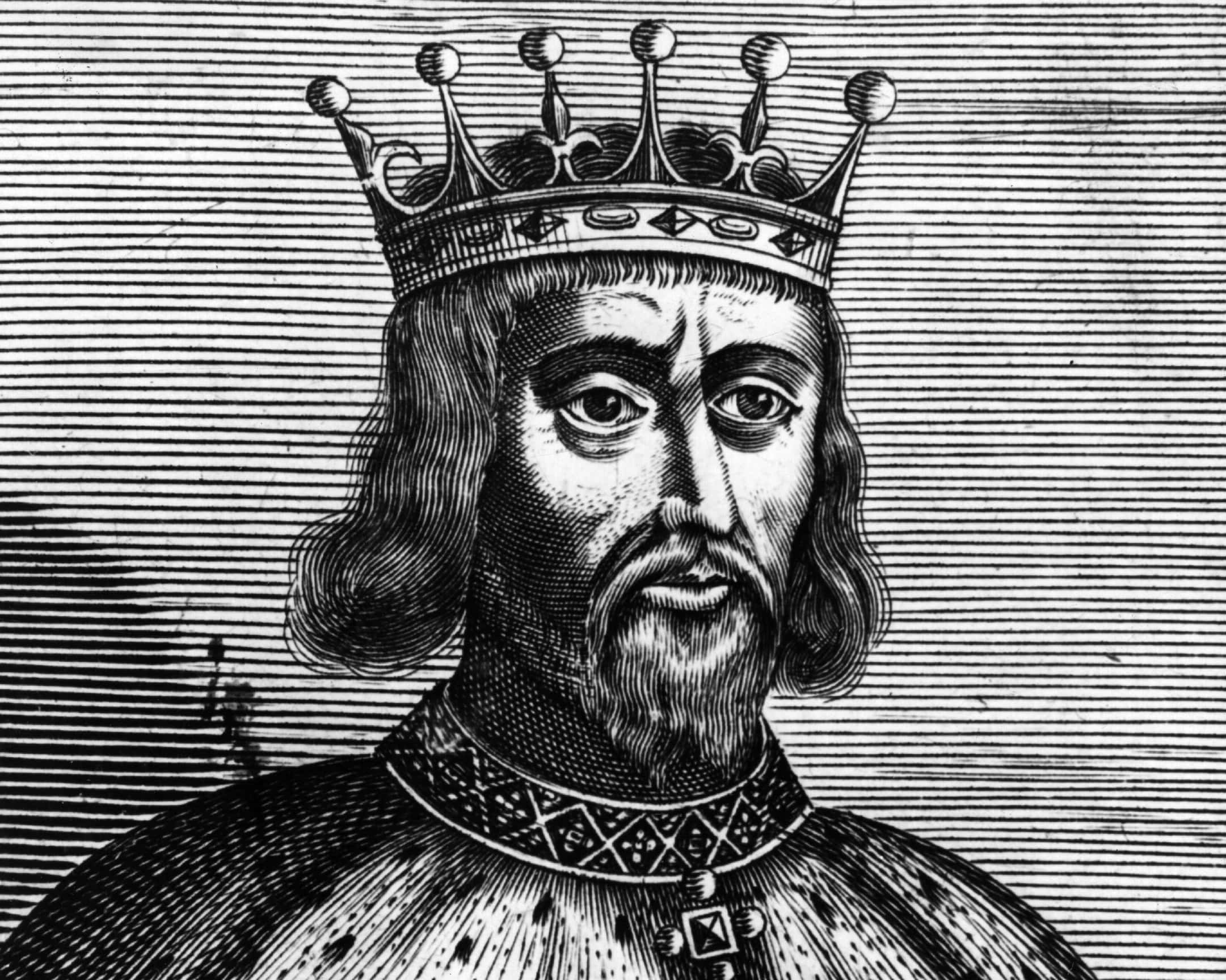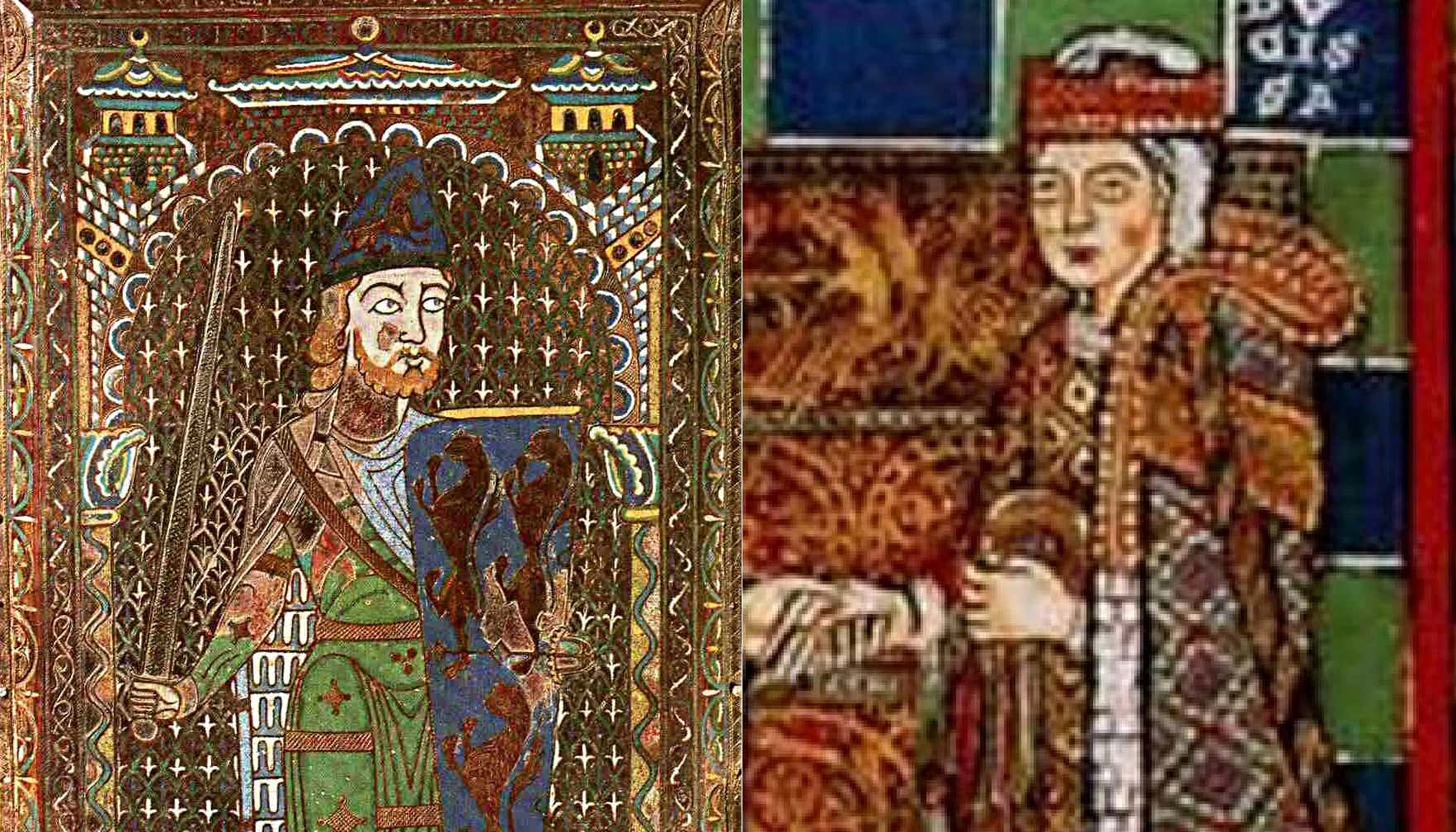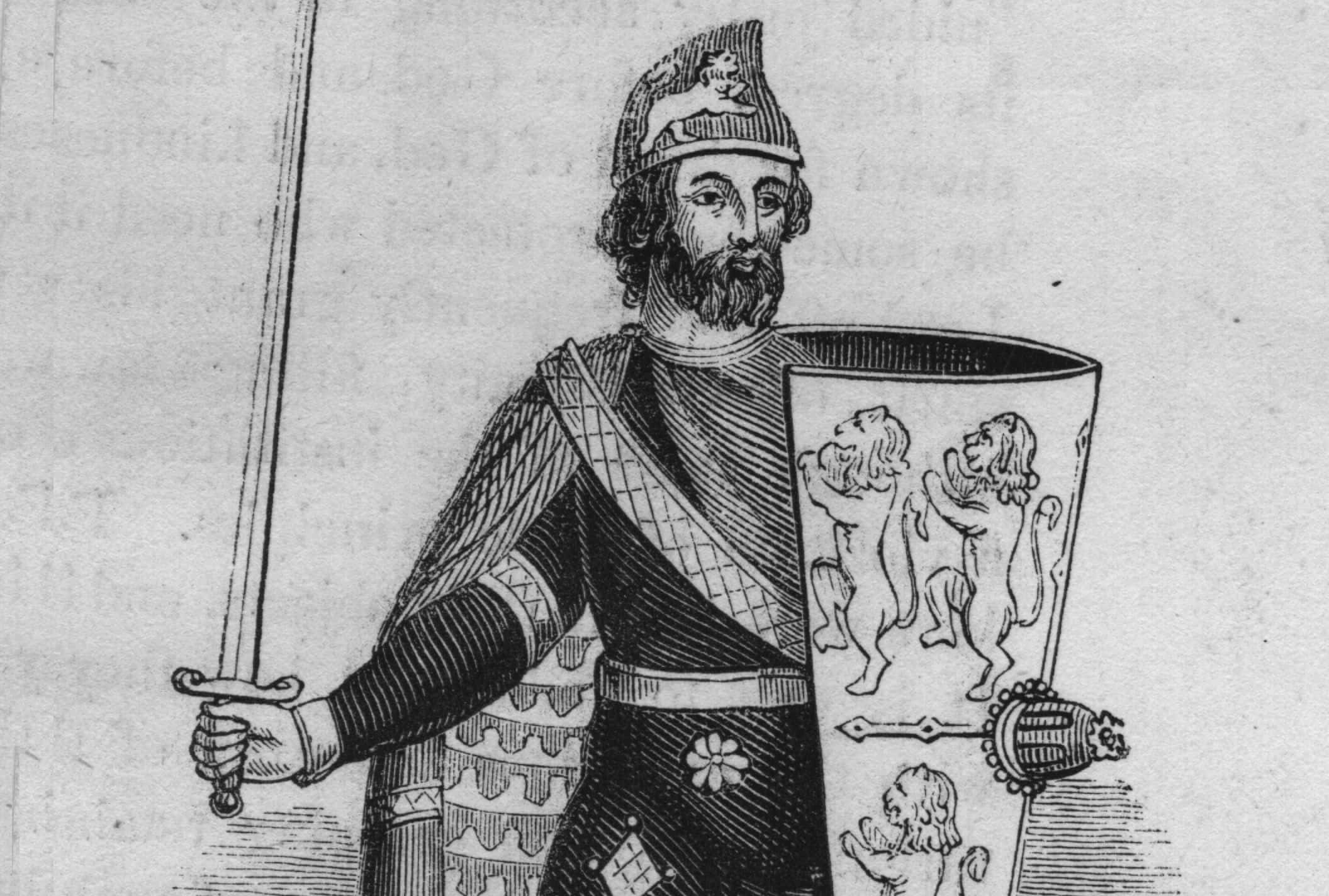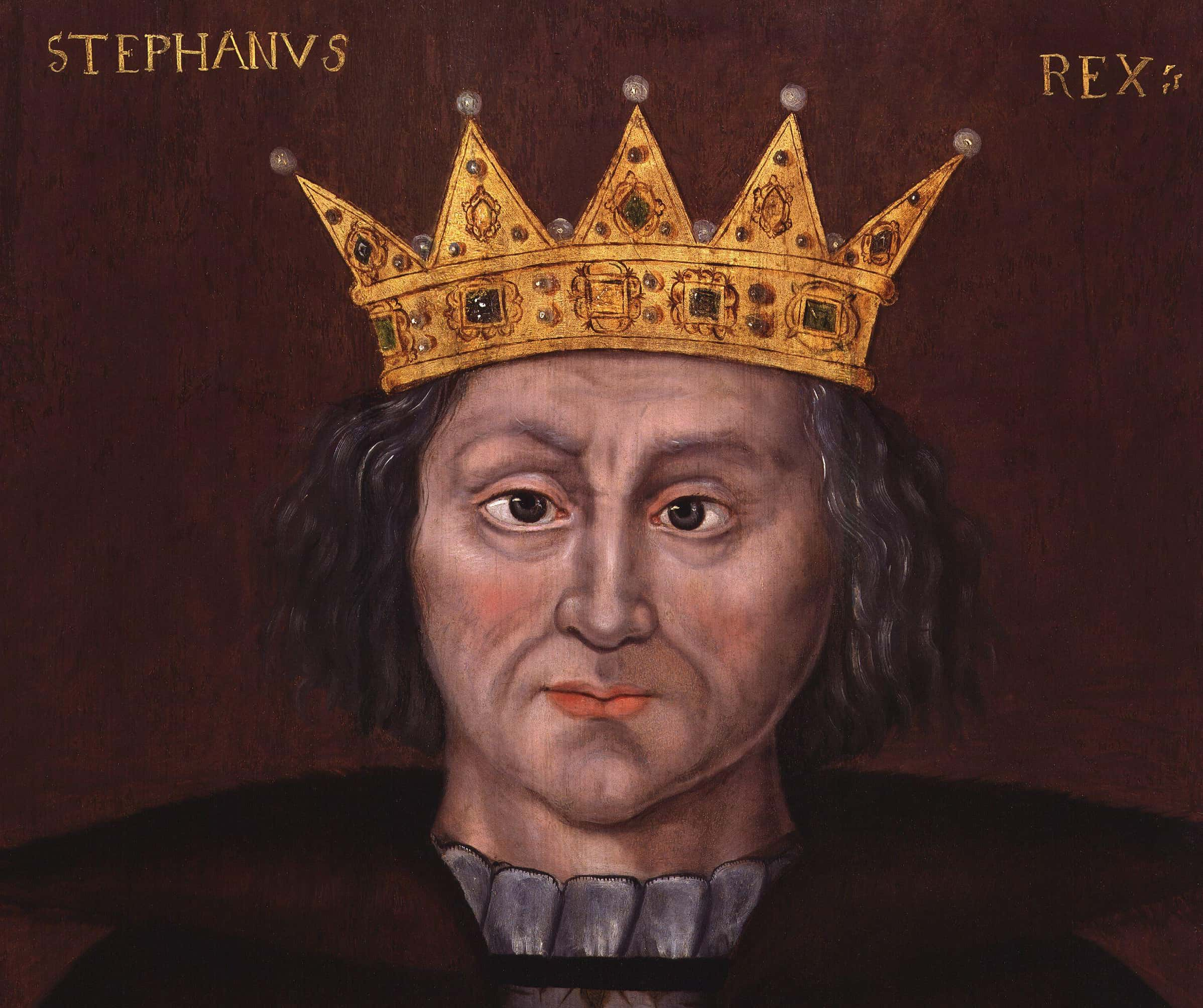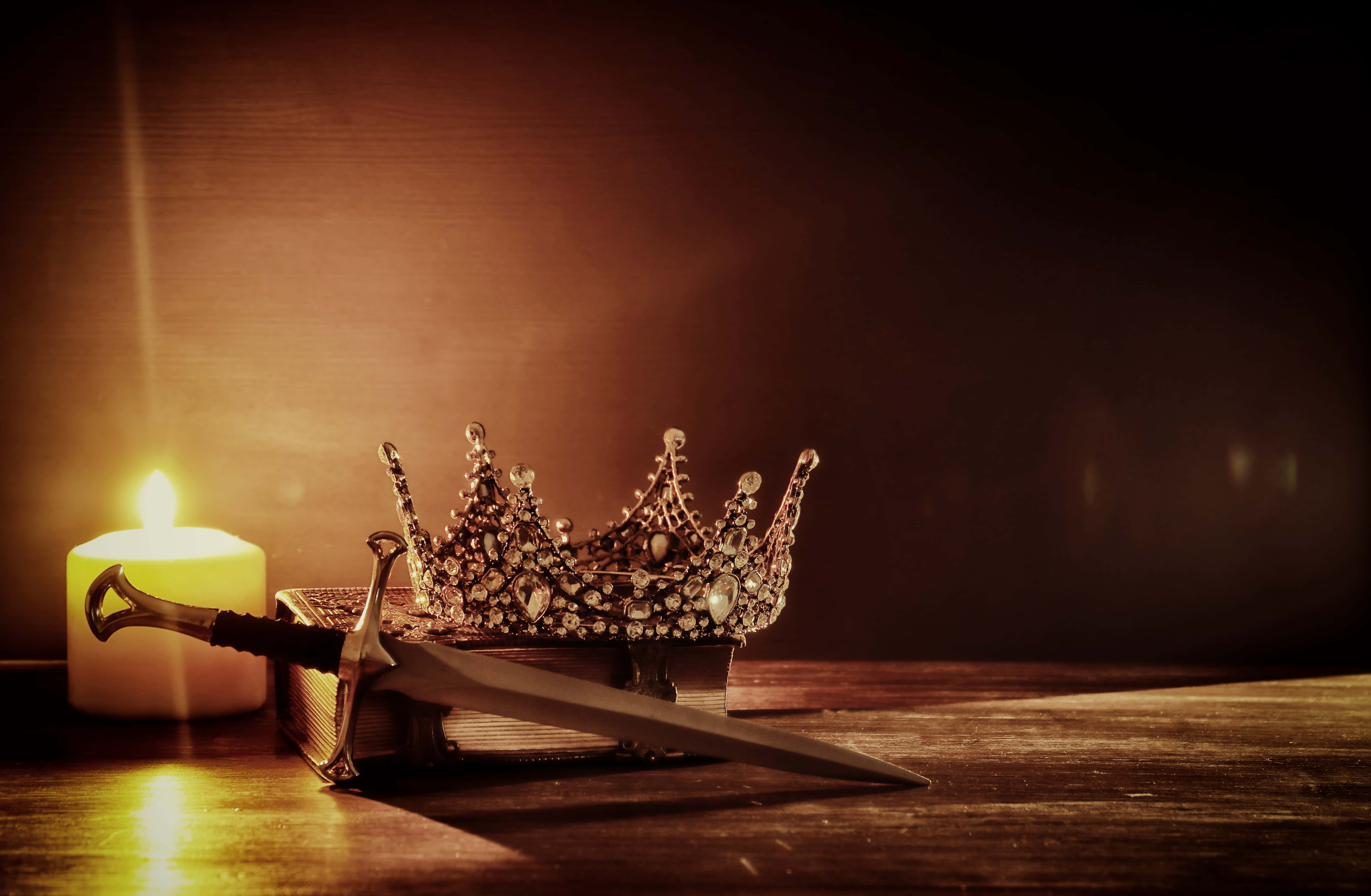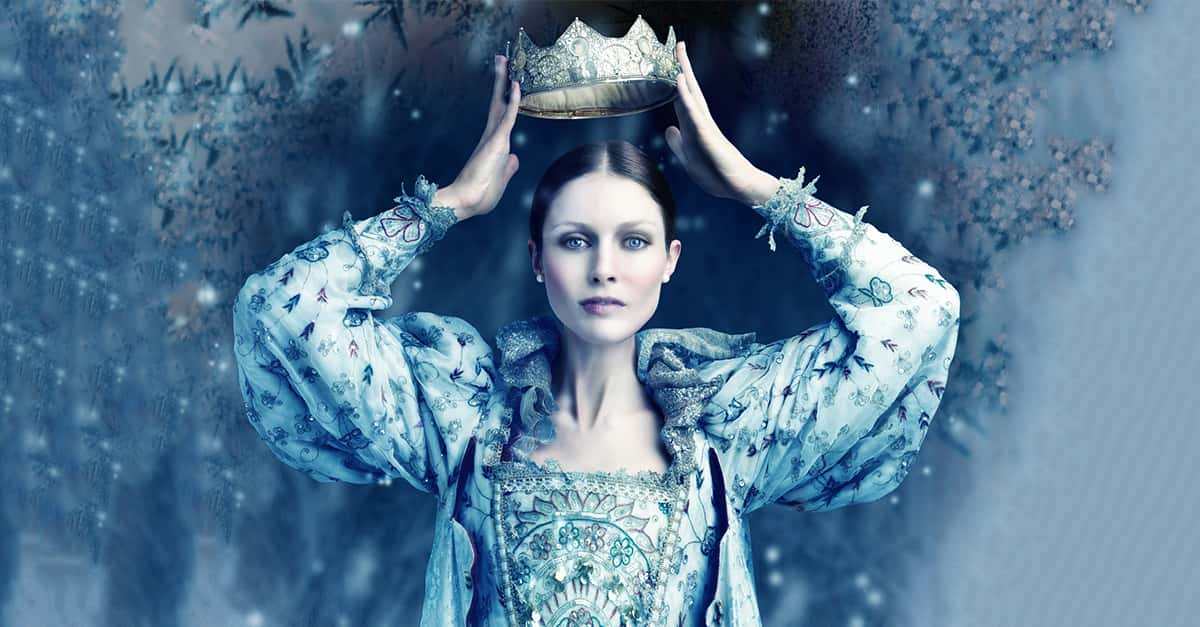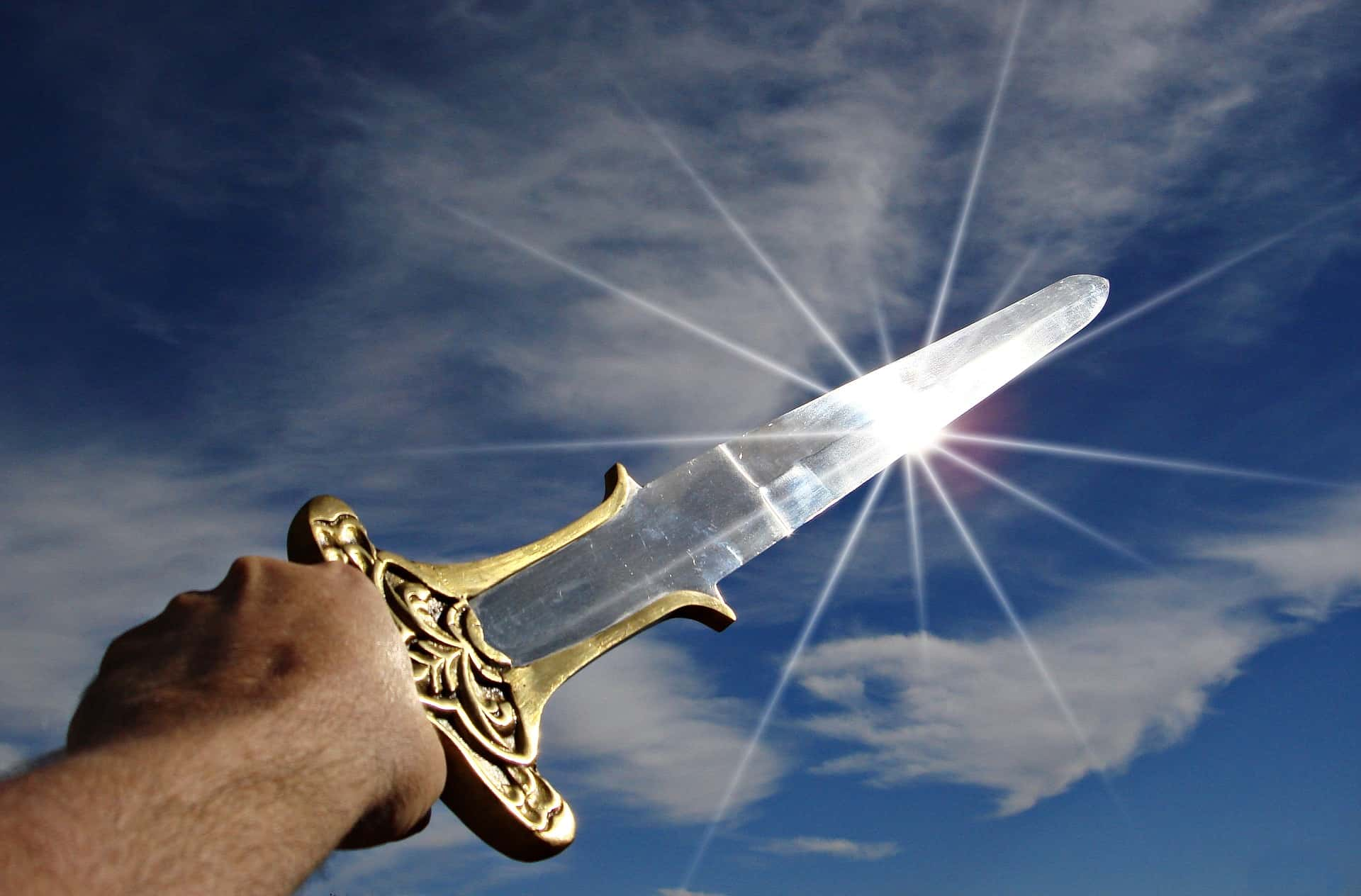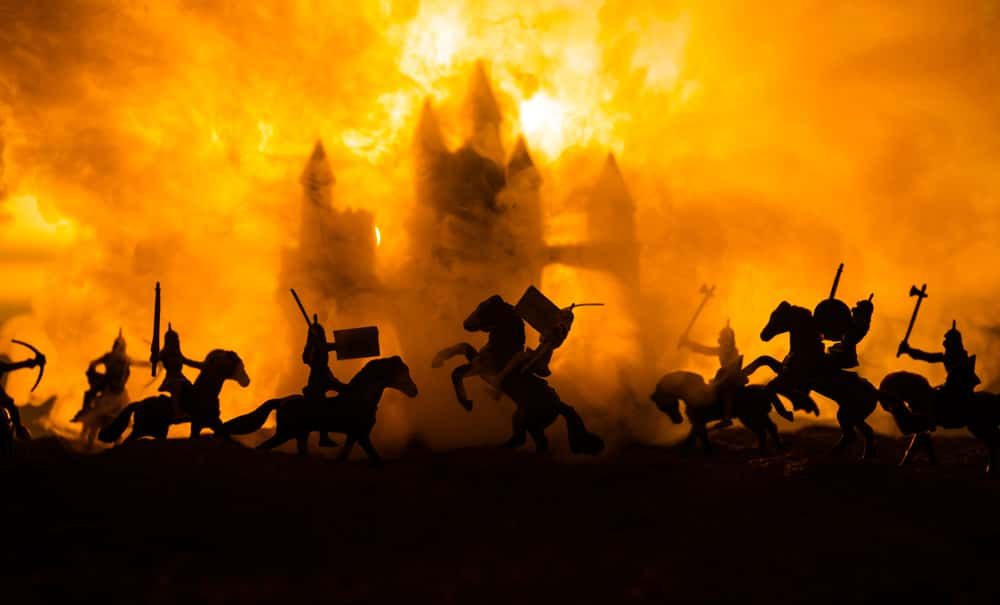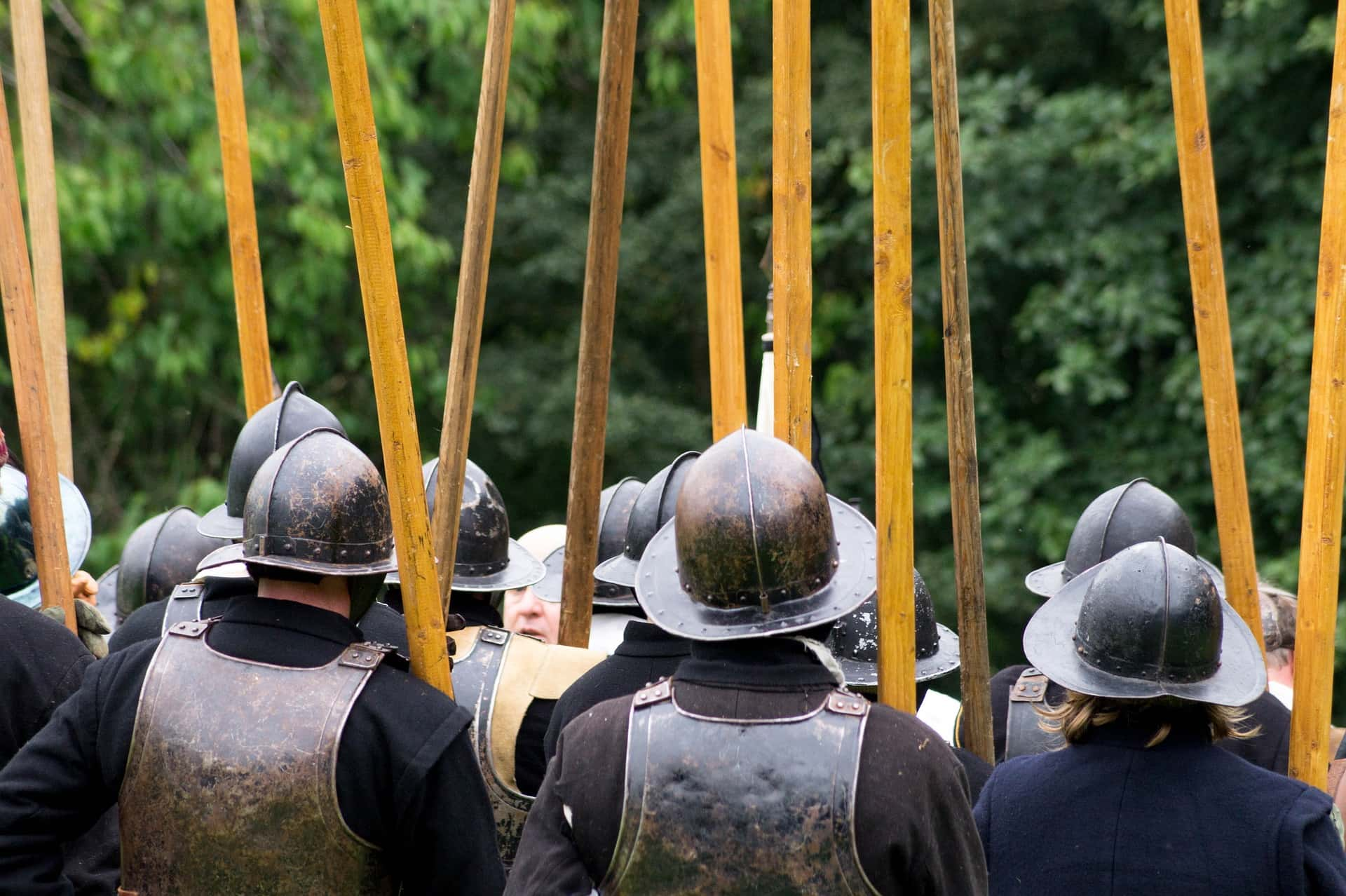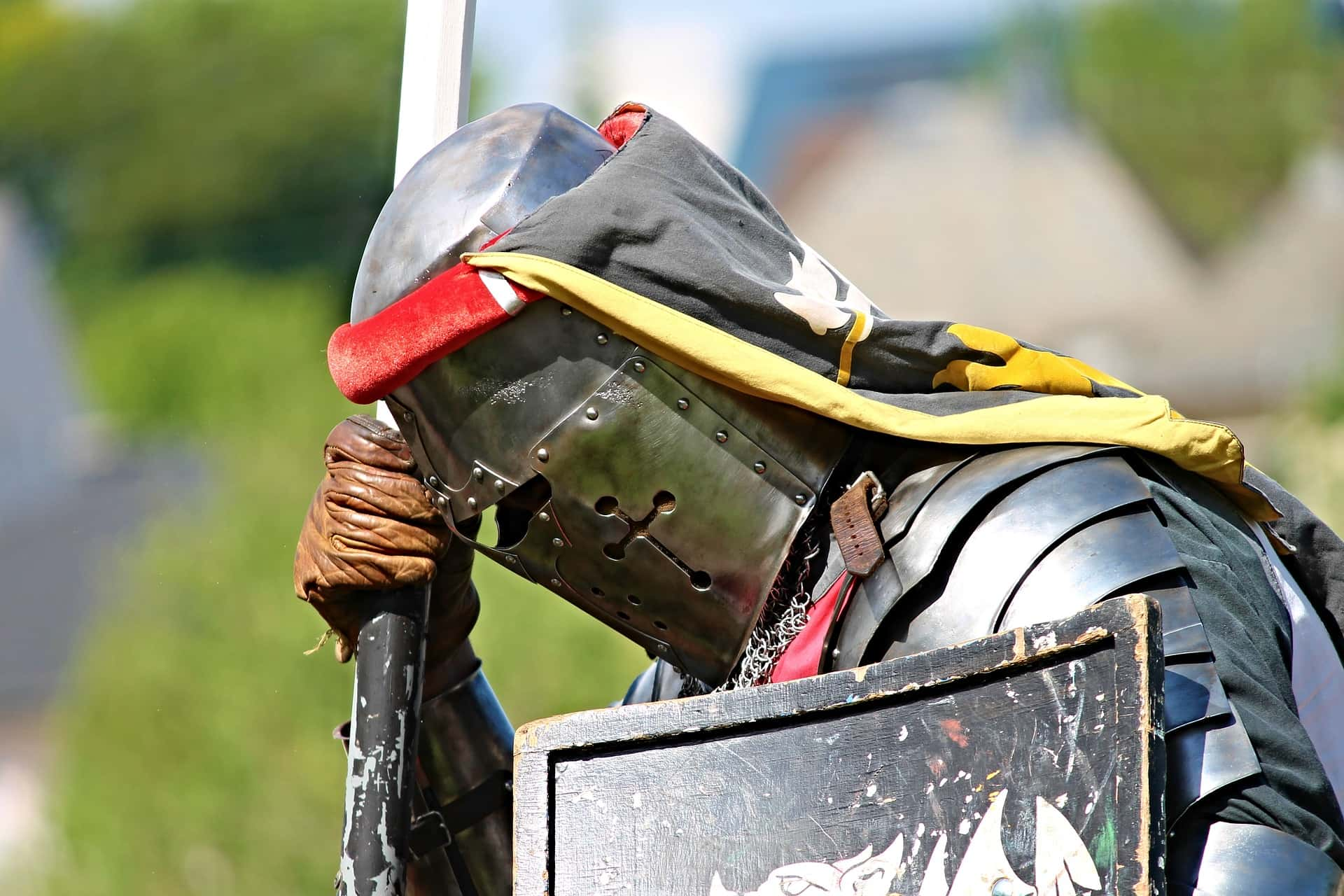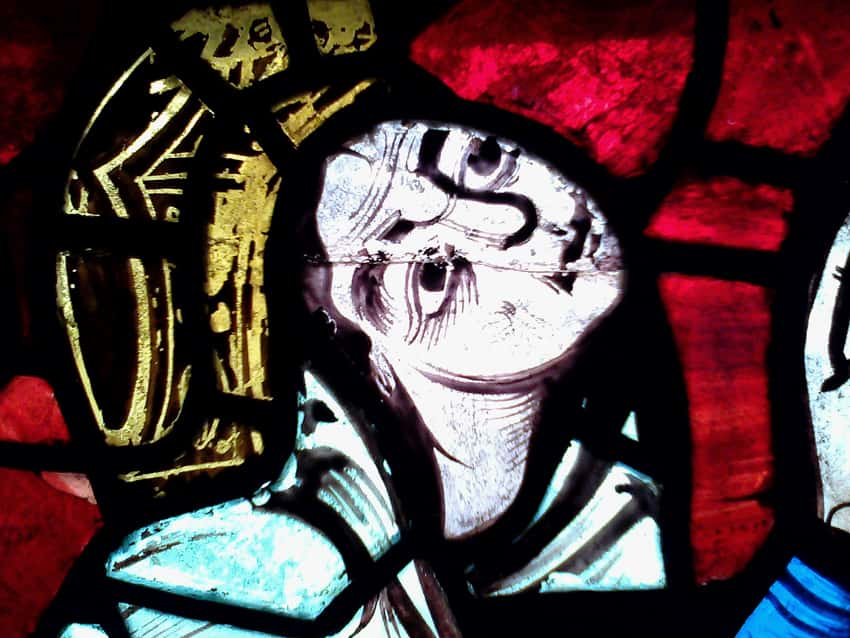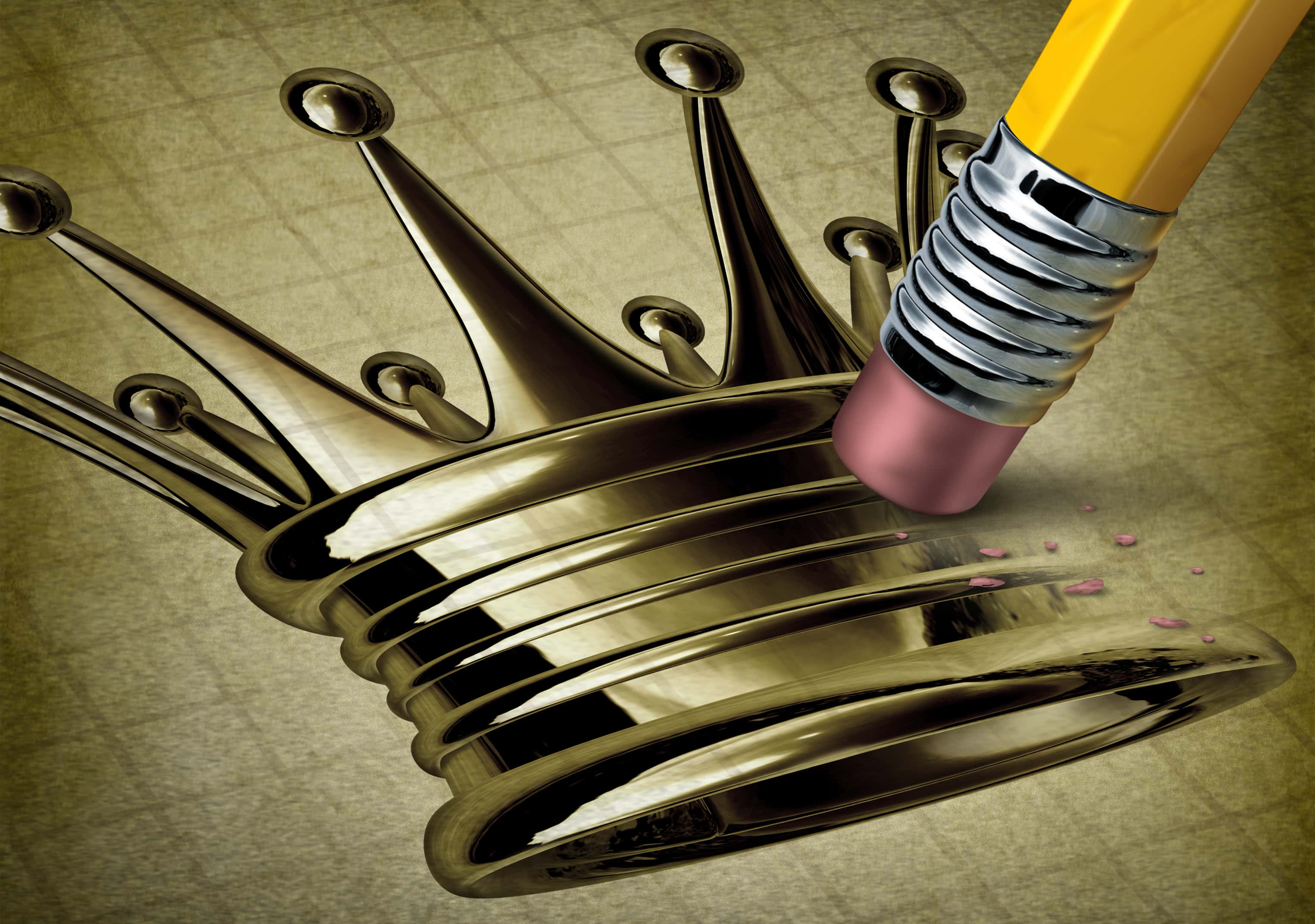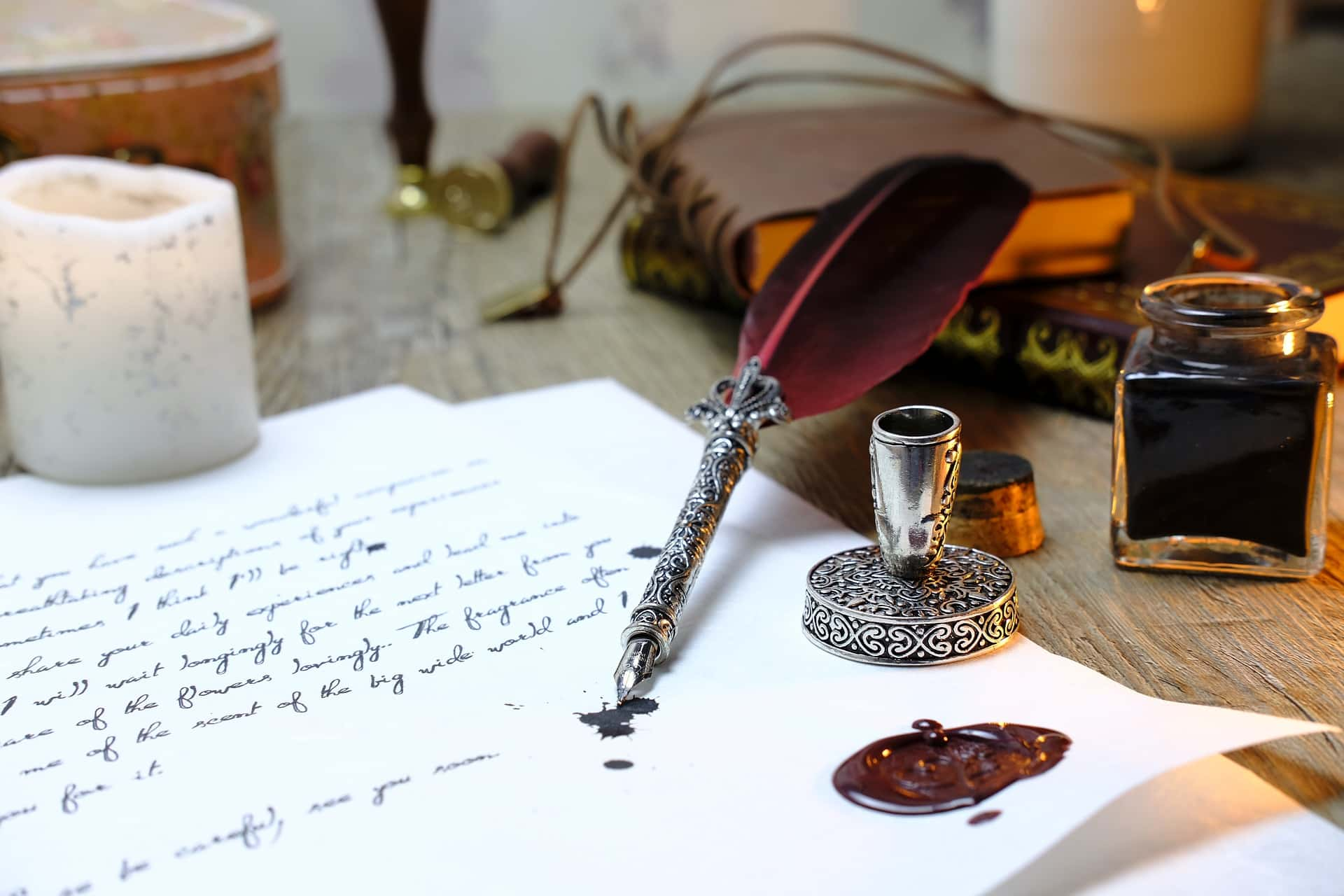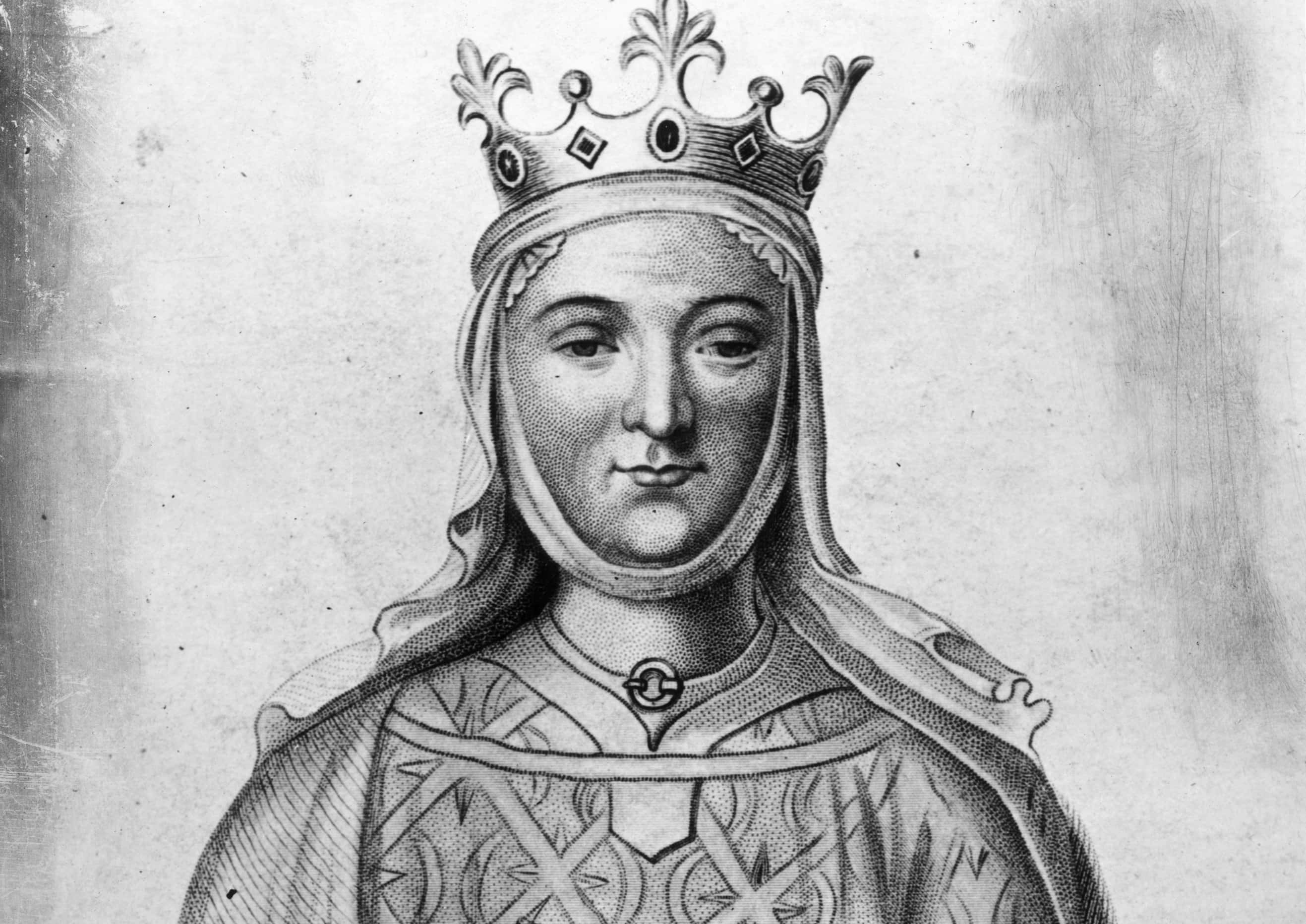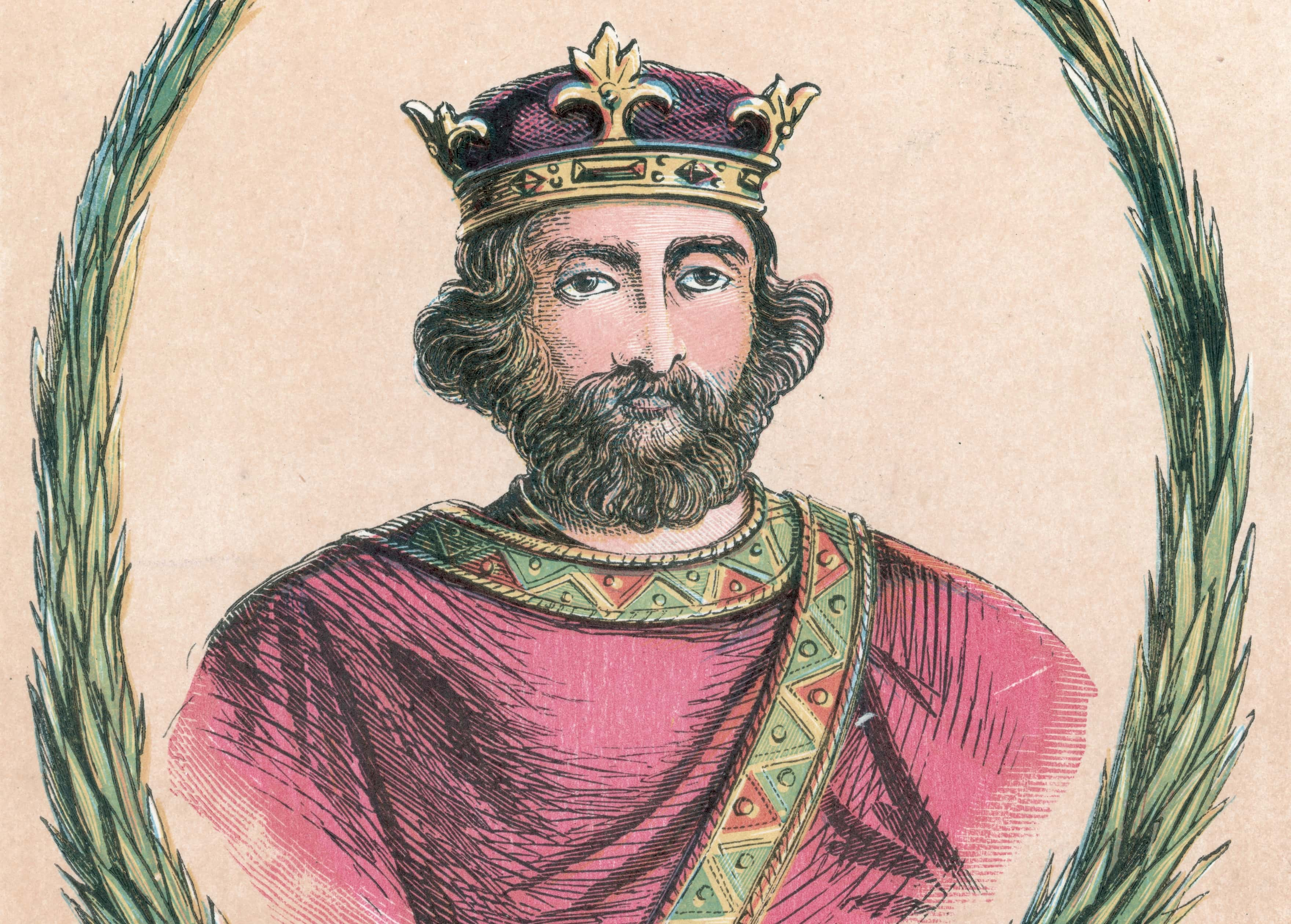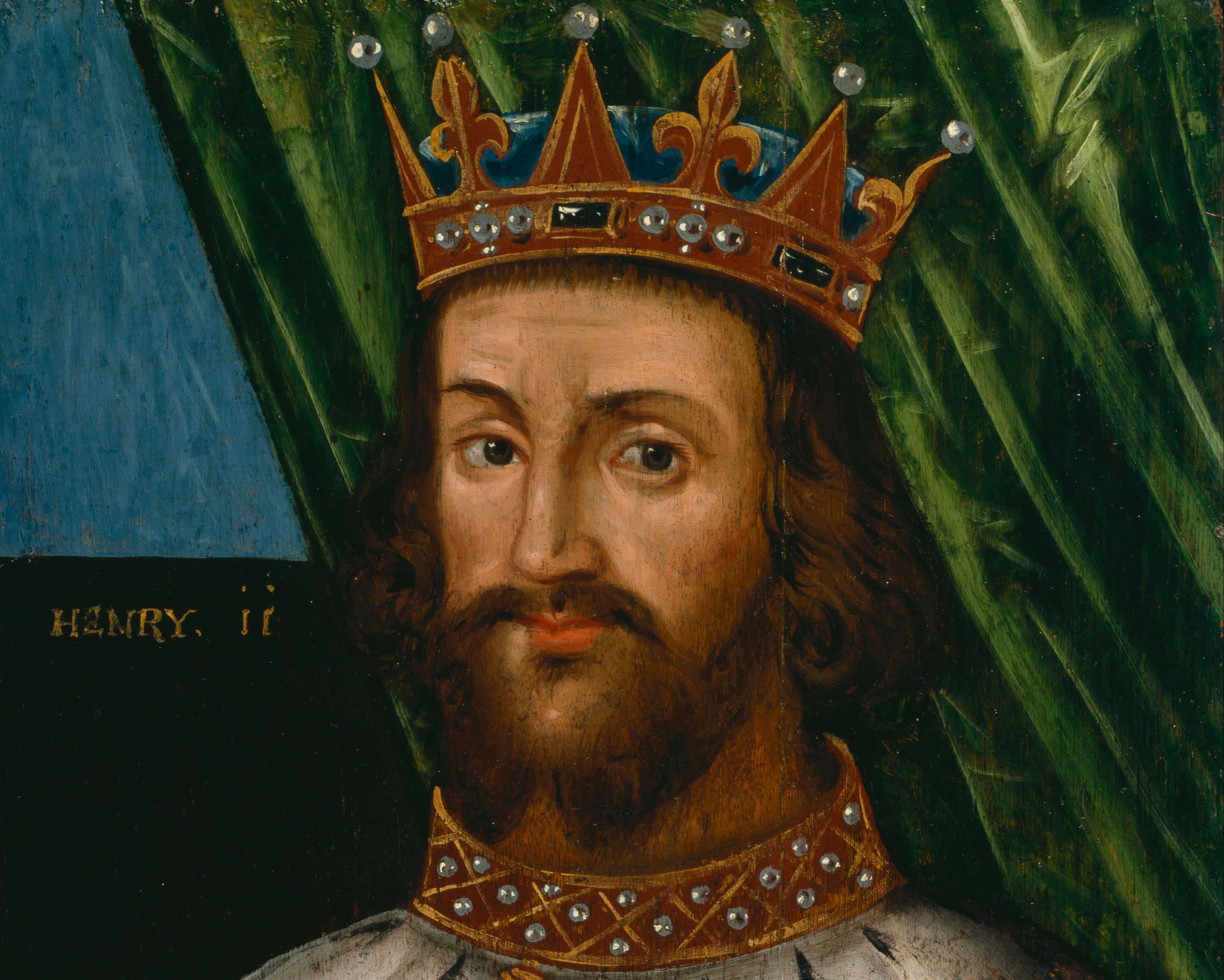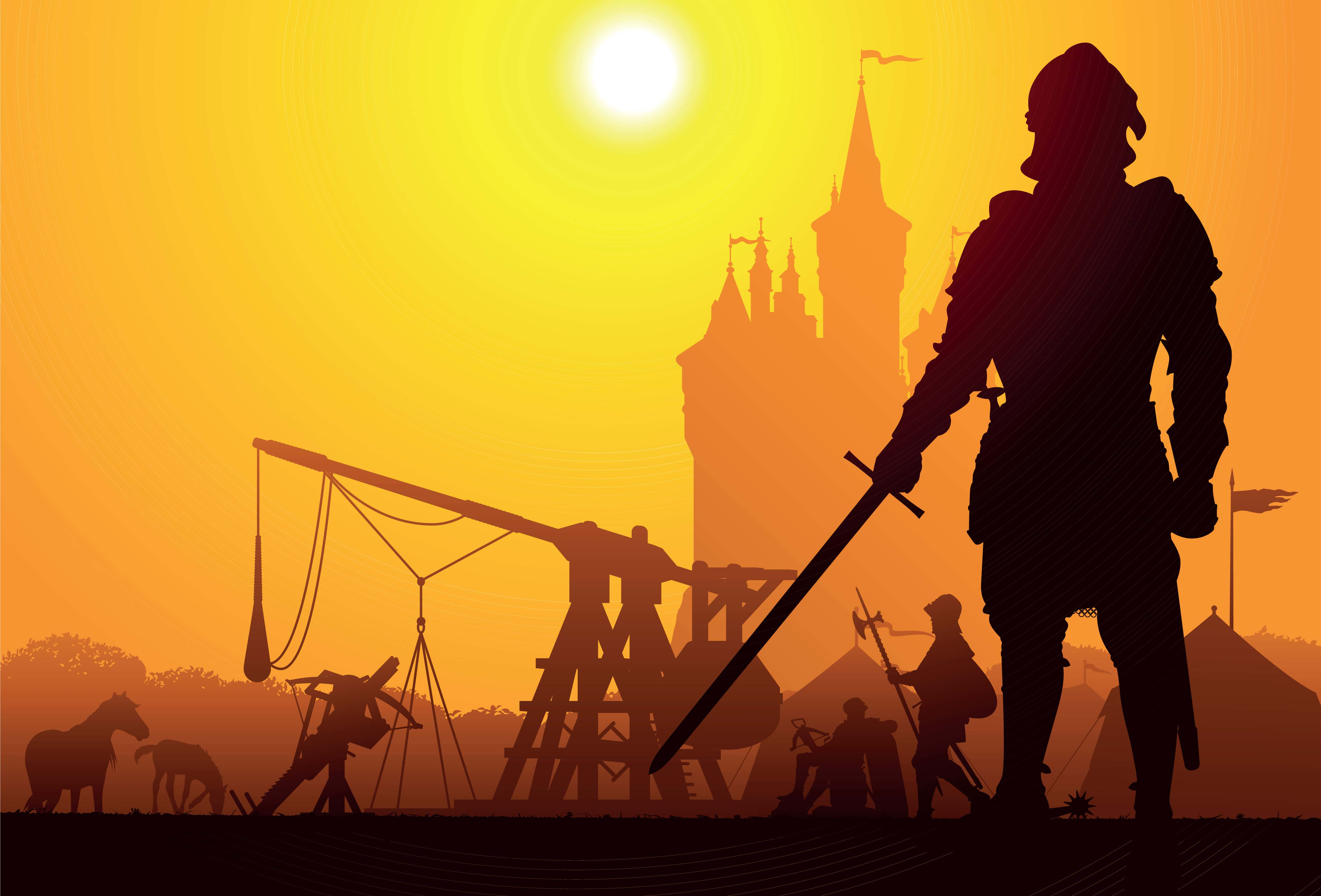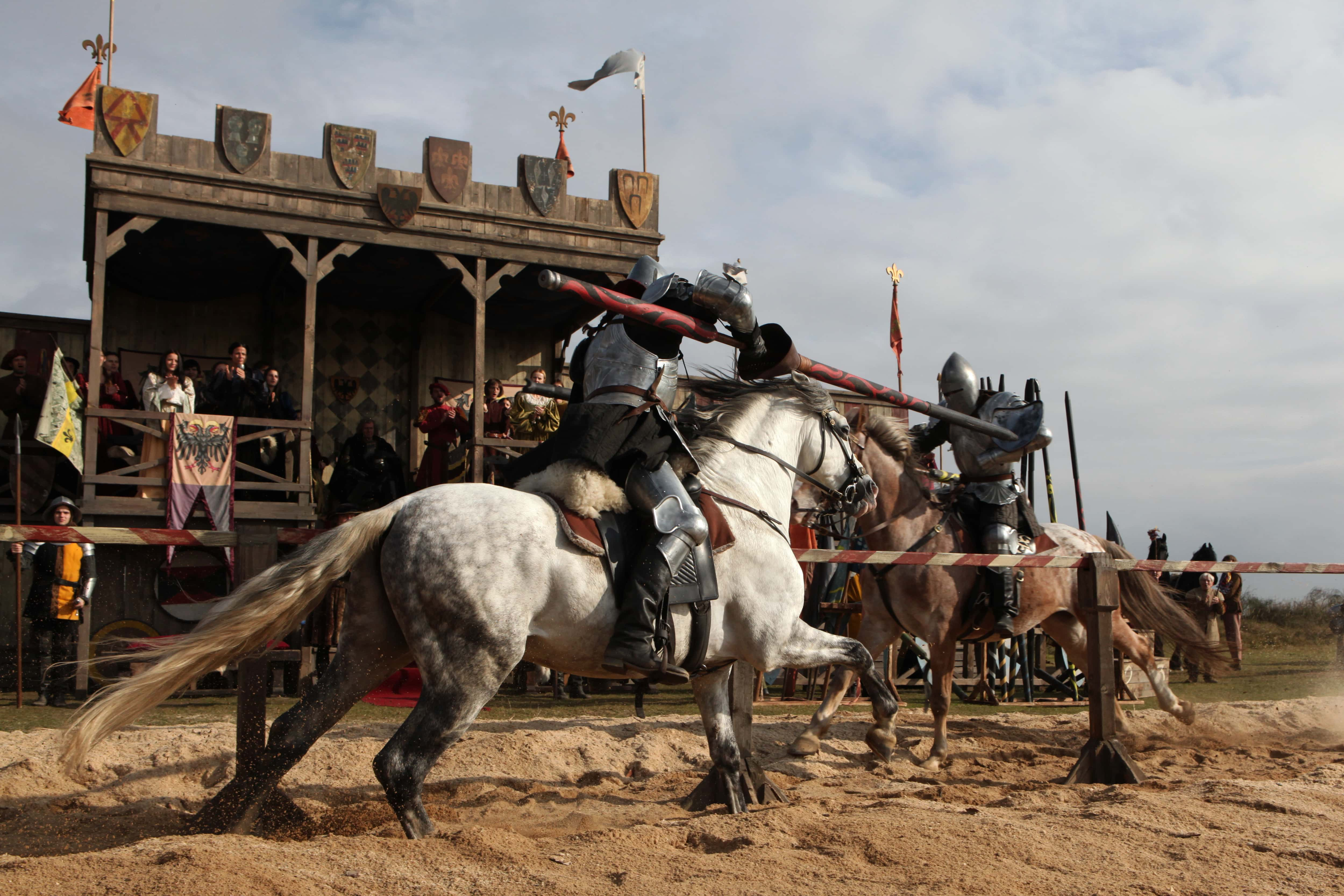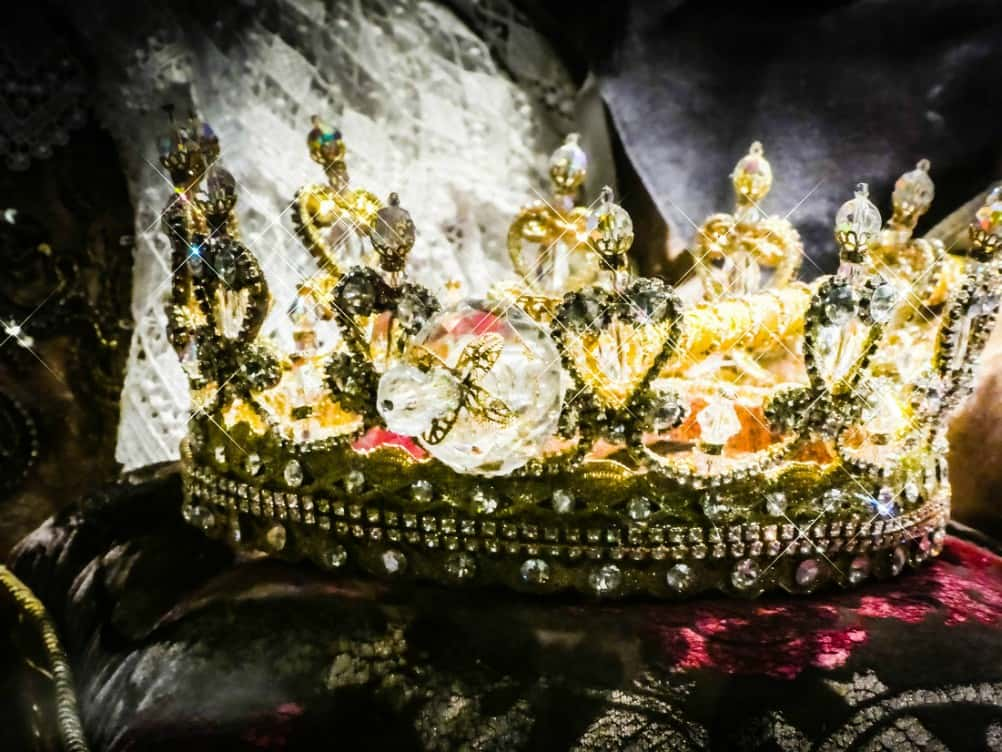"What a parcel of fools and dastards have I nourished in my house, that not one of them will avenge me of this one upstart clerk."—Henry II
Henry II of England (also known as Henry of Anjou, Henry Plantagenet, Henry FitzEmpress, or Henry Curtmantle) was born in 1133 in Le Mans, Maine, which is now part of France. Before becoming King of England in 1154, he was first made Duke of Anjou in 1151, and Duke of Aquitaine in 1152. Even for a king, Henry lived a wild life, so read on for 51 facts about this murderous monarch.
1. Long May He Reign
King Henry II had an amazingly long reign for a medieval king, managing to hang onto the throne for 34 years and 254 days. While it’s nowhere close to the 67+ years that Elizabeth II has been queen, he was one of the longest-serving British monarchs of the High Middle Ages.
2. Choosing an Heir
In the battle between the sons of William the Conqueror for the Kingdom of England, the fourth son, Henry I, emerged the victor and took all of the power. To prevent future battles, he named his one and only legitimate son, William Adelin, his heir. But, as they say about best-laid plans, they often go awry, and this one definitely did. Who could have foreseen that William would drown in the White Ship Disaster of 1120, resulting in a crisis of succession.
3. Empress Maud
With William Adelin’s death, King Henry had a problem on his hands. He had no shortage of kids, but all, with the exception of his daughter Matilda, were illegitimate. By this point, Matilda was married to Henry V of Germany, and was given the title of Empress of Germany. Unfortunately for Matilda, when her husband died in 1125 she was childless, leaving the door open for someone else to seize the German throne, and for Henry to call her back to Normandy to name her his successor.
4. Drumming up Support
Naming Matilda his successor was only part of the battle for Henry. The other challenge was getting the English people to support her as their future queen, which he thought he could do by marrying her off to Geoffrey of Anjou—a boy nine years her junior. He had hoped the marriage would produce a son who would be old enough to rule by the time he died, solving the problem quite neatly by providing him with a natural male heir.
5. Unhappily Married
Neither of Henry II’s parents were particularly thrilled about their arranged marriage, but for political reasons, Henry I reportedly forced Matilda to marry Geoffrey of Anjou. Their marriage was said to be extremely stormy, and they did not get along at all. Both had nasty tempers, and in 1129 she left him and returned home to England. Despite their dislike of one another, Geoffrey wanted her back, and in 1131, the king made her return to fulfill her royal duty of producing an heir.
In this, at least, they were successful, and Matilda managed to produce three sons: Henry, Geoffrey, and William.
6. Anarchy
Had everything worked the way Henry I planned it, the civil war known as the Anarchy probably never would have happened. Of course, things couldn't be so simple. Despite Henry I’s efforts to secure Matilda’s claim, upon his death in 1135, his nephew Stephen of Blois (who, ironically, was supposed to have been on the White Ship that killed William Adelin and started this whole mess) saw his opportunity and seized the throne from Matilda while she and Geoffrey were fighting in a conflict in Anjou.
7. Supporting His Claim
Being Henry I's successor, Matilda had every right to the throne, but unfortunately for her, Stephen had his ducks lined up properly when he made his big power grab. He had already secured the support of the Church, thanks to his brother Henry of Blois, Bishop of Winchester. He also had the citizens of London behind him, who declared him King.
8. Almost Queen
Matilda was not about to give up her right to the throne, and for the next 18 years, she and Blois fought back and forth, with Matilda being a hair’s breadth away from being crowned queen in 1141. Sadly, sexism was alive and well in Medieval England, and thanks largely to the people not wanting to be ruled by a woman, London rose up against her, forcing her to flee and continue her efforts behind the scenes.
9. First of His Line
Geoffrey of Anjou’s nickname was Plantagenet, derived from the sprig of the broom flower (Planta genista) he liked to wear in his helmet, and that he had planted all across his lands to improve the chase while hunting. Although the name wasn’t officially used as a surname for another few hundred years, technically, Henry II was the first of Plantagenet kings.
10. Gaining a Dukedom
During the Anarchy, Geoffrey didn’t just rest on his laurels while his wife battled it out with Stephen. In 1144, he managed to gain control of Normandy and assumed the Dukedom, which he and Matilda gave over to their son Henry in 1150, when he was 17.
11. Not Going to Happen
At one point, Geoffrey wanted to marry the 13-year-old Henry FitzEmpress to the infant daughter of King Louis VII of France. This fell through when the French abbot Bernard of Clairvaux advised against it on the grounds that Henry and Louis’ then-wife Eleanor of Aquitaine were too closely related (third cousins).
How ironic that Henry later ended up marrying Eleanor when her daughter would have been a more distant relation.
12. Taking Up the Mantle
Being the legitimate grandson of Henry I and son of his named successor, Henry II had a pretty strong claim to the throne, and he was quite prepared to fight for it. In 1147, he gathered up some mercenaries and charged into England to go up against Stephen, but he did so without the approval of his mother Matilda, or his uncle Robert, 1st Earl of Gloucester, who was managing Matilda’s army.
13. A Bit Hasty
While Henry did prove to be a capable military leader, his first foray into England wasn’t quite as well-planned out as it should have been. It turned out he didn’t have enough money to pay his mercenaries, and for whatever reason, Stephen, the very man he was there to attack, was kind enough to pay for Henry and his mercenaries to go home.
Stephen's reasons for such kindness to his enemy are still not understood.
14. Henry’s Half-Brother
Henry’s father Geoffrey got around quite a bit and had an illegitimate son named Hamelin by one of his mistresses. Hamelin spent most of his life serving the English throne, being a member of Henry’s court when he was king, and of Henry’s sons Richard and John during their reigns.
15. New Conquests
Aside from the lands he gained through marriage, Henry II vastly expanded his empire with conquests of his own. In the 1150s he took the lands of Northumberland and Cumbria back from Scottish control. In the 1160s, he made himself overlord of Brittany in France, making his illegitimate son Geoffrey the Duke of Brittany. Then, in 1171, he made a successful conquest of Ireland, making his son John the first English Lord of Ireland.
16. Losing His Claim
Not surprisingly, Henry II and King Louis IV of France were rivals for most of Henry’s reign, mostly because of Henry’s rapid marriage to Louis’ ex-wife, Eleanor of Aquitaine, just eight weeks after their annulment. It wasn’t so much that Louis was sour about losing Eleanor, but more the possibility that this new marriage might produce a son.
If Henry and Eleanor were to have a son, he would become the Duke of Aquitaine, removing any possibility of Louis and his daughters claiming it for themselves.
17. Not His Native Tongue
Something that few people realize is that French, not English was the language spoken by English kings and their courts from William the Conqueror right up until the time of Henry IV. Henry II was no exception, and while he is believed to at least have understood English, he only spoke Latin and French.
18. A New Ally
After his embarrassing failure in 1147, Henry returned to England in 1149, planning to form an alliance with Ranulf, the Earl of Chester. As soon as their peace agreement was settled, they agreed to attack the city of York, possibly with support from the Scottish king. Unfortunately, this plan was also foiled.
As soon as he got wind of it, Stephen marched north to York, forcing Henry to return home to Normandy yet again.
19. Marching Again
You can’t say that Henry didn't learn from his mistakes, and when he marched into England for the third time, in 1153, he was much better prepared. He was recently married to Eleanor of Aquitaine, which gave him additional lands and power, and he had the support of the Earl of Chester in the North, and rebels in the East. Stephen agreed to declare a temporary truce, but by that summer the writing was on the wall. Henry was gaining so much land, Stephen had to start rethinking his position.
 The Lion in Winter (1968), 20th Century Fox
The Lion in Winter (1968), 20th Century Fox
20. Ending the Anarchy
In November 1153, Stephen gave up the battle and agreed to the Treaty of Winchester. The treaty stipulated that Stephen name Henry as his adopted son and successor, bypassing his natural son William. As long as Henry pledged his loyalty to Stephen, William would give up his claim to the throne and support Henry. Stephen died the following year and Henry succeeded him as planned, finally ending the 18-year Anarchy.
21. Never Another
King Stephen was the only one of his name. Although holding onto power until he died was an accomplishment in itself, and whether it's right or wrong, history has not remembered him kindly. To date, there has never been another English king with his name.
22. Pious Princess
In addition to his two sons, Eustace and William, King Stephen had a daughter named Marie, who was happily enjoying life as a prioress at Lillechurch (the nunnery founded by her parents) for the duration of the Anarchy. She was elected Abbess of Romsey in 1155, and all was fine and dandy for about five years, and then her brother William died childless, making her the Countess of Boulogne and a very wealthy and powerful woman.
23. Abducted Abbess
The thing about being a wealthy heiress was that Marie de Boulogne suddenly became a very attractive prize. One person who had his eye on her money and lands was Matthew I, son of the Earl of Flanders. Now, being that she was an abbess, she wasn’t technically available to marry, but that didn’t matter much to Matthew.
He abducted her from the abbey, and King Henry II forced them to marry, likely to secure an alliance with Flanders.
24. Inheriting a Mess
The Anarchy left England in a state of chaos and ruin, which Henry II immediately had to deal with when he took the throne. While the proverbial cats were busy fighting, law and order totally went out the window. Local lords started producing their own currency, laws regarding royal hunting rights broke down, royal funds were greatly depleted, and nobles just started building unauthorized castles all over the country.
 The Lion in Winter (1968), 20th Century Fox
The Lion in Winter (1968), 20th Century Fox
25. Restoring Order
Henry knew that he couldn’t just allow the lords and other nobles to remain unchecked after the war, and in order to bring the country back to what it was, he had to retake power. His first order of business was to destroy all of the unauthorized castles built during Stephen’s reign. He also implemented a new law which stated new castles could only be built with his permission.
Next, he got rid of all of his barons’ foreign mercenaries, which seriously weakened the nobles who could try and remove him from the throne. Well played!
26. Ongoing Education
For his entire life, Empress Matilda made sure that Henry was given the education necessary for a future king. Henry apparently loved to learn, and as king, he arranged for some of the best scholars in the world to visit his court and discuss key issues.
He was also smart enough to recognize what he could learn by observing others, and he liked to ride around the country finding out what was actually happening, rather than relying on second-hand information.
27. Medieval Publicist
Even kings needed a publicist, and that role fell to Peter of Blois. He was a French diplomat who was basically a medieval version of a spin doctor for Henry II. His job was to write letters to foreign contacts praising the king, and to defend his conflict with Thomas Becket, the Archbishop of Canterbury.
28. Like a Lion
The best picture of what Henry II looked like comes from Peter of Blois, who described the agile and bold king as having a square, lion-like face, bowed legs from so many years of being on horseback, and a broad chest. Henry’s temper apparently lived up to his fiery red hair, and he was known to be highly intelligent and extremely high-energy.
 The Lion in Winter (1968), 20th Century Fox
The Lion in Winter (1968), 20th Century Fox
29. Queen of Two Countries
Henry’s wife Eleanor of Aquitaine has the rare distinction of having been the Queen of England and the Queen Consort of France. Prior to marrying Henry II, she was unhappily married to King Louis VII of France for 15 years. Eleanor was no fan of Louis, thinking him weak, unmanly, and way too religious for her liking.
While there’s no evidence that Louis bore any disdain for Eleanor, neither the French nobles nor her mother-in-law cared for her, and neither of her two children were boys, so she could have been totally doomed if Louis had wanted to get rid of her.
30. Powerful Alliance
The ink on the annulment of Eleanor and Louis’ marriage had barely had time to dry before she and Henry were married. When they hooked up, there were several different theories about how they got together. The pair had certainly known each other before, and some thought they were madly in love. Others thought that Henry, like others before him had tried, kidnapped Eleanor for her inheritance. A third theory suggests that they plotted it together, driven by a mutual ambition for power.
Whether any or all of these theories are true, they became the ultimate power couple of the day.
 The Lion in Winter (1968), 20th Century Fox
The Lion in Winter (1968), 20th Century Fox
31. Two Sides to Every Coin
There were many traits that Henry admired, but loyalty was the one thing he demanded above all. He was famous for his violent temper, and nothing set him off quicker than believing that someone was traitorous. He was said to have reacted to betrayal so furiously that he frothed at the mouth, screaming in rage.
Yet, at the same time, he was able to appreciate reasonable opposition and could deal with it fairly. Just pray he agreed with you on the line between reasonable and traitorous.
32. Stay Away
Eleanor of Aquitaine was a crazy powerful woman, and she was rumored to have had several lovers during her marriage to Louis, including her uncle Prince Raymond of Antioch, and Henry’s father Geoffrey. Whether they were or weren’t lovers is unknown, but Geoffrey did supposedly warn Henry to stay away from her, possibly because of the scandal he knew it would cause—or maybe because he was jealous?
33. Henry’s Haters
King Louis never quite got over being furious at Henry and Eleanor's marriage, especially because their combined lands equaled more than his. He basically took this as a personal insult, and in response, gathered up a group of Henry’s haters to fight against him. Thankfully, Henry was really skilled in warfare and was able to meet them at every turn.
But, to be fair, it should also be mentioned that Henry also lucked out in that Louis got sick and quit fighting, forcing the others to back off as well.
34. Never Again
One thing that resulted from Henry’s control over such a vast amount of French land was that all future French kings made it their mission to never allow any future Duke of Normandy to take more of their territory. While all that maneuvering worked out well for Henry, it led to several hundred years of wars between France and Britain over French lands, beginning with Henry’s son Richard I.
35. Fair Rosamund
When it came to women, Henry II had his share of mistresses, the first of which was Rosamund Clifford, or the “Fair Rosamund.” Their relationship was rumored to have begun somewhere around 1165, but somehow didn’t become public until 1174, the same year he imprisoned Eleanor in Old Sarum. Some legends have built her up to be the love of Henry’s life, but in reality, nothing is really known about how she felt about him, and of course, poor Rosamund took the blame for seducing Henry.
36. His Maybe-Son
In addition to the eight legitimate kids that he had with Eleanor, Henry had several illegitimate children, including Geoffrey, Bishop of Lincoln, who was probably born before his marriage to Eleanor. Who his mother actually was is anybody’s guess. He was said to have been the son of a woman named Ykenai, whom one writer labeled as a prostitute, though it's hard to say if this was accurate.
That same writer also questioned whether or not Geoffrey was actually Henry's son. For his part, Henry still acknowledged the boy, and he was brought up with Henry's other children. Henry’s son Richard also must have believed it, as he made a pointed effort to curb any possible ambitions Geoffrey might have to seize the throne.
37. The Other Bastard
Henry’s other notable illegitimate son was William Longspee (an archaic form of the word "longsword"), so named for his great size and for his huge weapons. William had been assumed to be the son of Rosamund Clifford until about 1979, when new information came to light proving one of Henry’s other mistresses, Ida de Tosny, to be his mother.
William grew up to fight alongside King Richard I in Normandy. He was also temporarily loyal to his other brother John when he was king, leading John's army in the south during the civil war that broke out after the signing of the Magna Carta. His loyalty only went so far though, and when the French King Philip II landed in England, William figured John was beaten and joined the enemy.
38. Asserting His Rights
No amount of power was ever enough for Henry II. Shortly after being crowned king, he decided to assert his right over Toulouse in the South of France, which Eleanor claimed as part of Aquitaine. Louis couldn’t let Henry win here, as the Count of Toulouse was one of his subordinates and he kind of owed him his protection.
Henry’s idea was to march into Toulouse and strongarm the count into submission—but much to his surprise, Louis had already marched his army there. Louis pretty much sat in Toulouse and dared Henry to come and get him.
39. On Second Thought
Directly attacking Louis wasn’t something Henry was going to do. He didn’t have enough power yet to fight the French army in a well-defended city, and he decided to not weaken himself. Seeing as he'd just finished getting his own barons to submit, he didn't want them to get any ideas.
40. Inside Man
In 1154, Thomas Becket was introduced to Henry II, and they became instant friends. Henry made Becket his chancellor, and in 1162, elevated him to Archbishop of Canterbury. Henry thought that by putting his own man in charge of the English Church, he could restore the royal rights over the church to where they’d been in his grandfather’s age.
41. Changing the Law
In 1163, the Church acquitted a priest of murder, which led to a public outcry and demand for justice. At that point, the Church had its own court system separate from the crown, but Henry changed those laws to give his own court higher authority over the clergy. Henry naturally assumed that Becket was his ally and would support his decision, but upon becoming archbishop, Becket's loyalties shifted to the church. He refused to agree to Henry’s changes.
42. Final Straw
After the events of 1163, Becket fled to France and remained there in exile for six years. In 1170, he and Henry met in Normandy and seemingly made up—but that turned out not to be the case at all. While in France, Becket had excommunicated the Bishops of London for supporting the King, and when he returned, he refused to pardon them.
This totally threw Henry for a loop, and he reportedly flew into a rage, screaming “What a parcel of fools and dastards have I nourished in my house, that not one of them will avenge me of this one upstart clerk!"
43. Taking Him at His Word
Somebody apparently thought that the King really meant what he said about Becket, and on December 29, 1170, four knights sailed to England to seek out the Archbishop and take care of the Becket problem once and for all. Becket fled to Canterbury Cathedral, but the knights found him and hacked at him with their swords until they split his skull.
44. Be Careful What You Wish For
Becket’s death really rattled the king. The knights who murdered Becket were disgraced, and instead of ridding Henry of a problem, Becket became a martyr and was canonized. Canterbury Cathedral was turned into a shrine, and Henry was forced to make amends at Becket's tomb.
Thanks to all of this, Henry's efforts to separate Church and State had completely failed.
45. Splitting the Estate
In 1169, Henry II announced his intention to divide his kingdom between his four legitimate sons, leaving England, Normandy, and Anjou to Henry the Younger, Aquitaine to Richard, Brittany to Geoffrey, and Ireland to John. Wanting to avoid any arguments over succession after his death, when Henry the Younger was 15, his father had him crowned co-regent of England.
46. Family Feud
Knowing that he was 100% supposed to become king should have satisfied Henry the Younger, but it wasn’t enough. In 1173, Henry, who was pretty ticked off at what he perceived to be a lack of power and land, rounded up brothers Richard and Geoffrey and started a rebellion against their father.
47. Mama's Boys
When her sons began their rebellion against Henry in 1173, Eleanor was reportedly the mastermind behind it all. She wanted Henry to give Anjou, England, or Normandy to Henry the Younger, but the king refused. Figuring that Eleanor was more interested in protecting her sons than supporting him, Henry had Eleanor captured and imprisoned, where she remained until his death in 1189.
 The Lion in Winter (1968), 20th Century Fox
The Lion in Winter (1968), 20th Century Fox
48. Brother Against Brother
The alliance between Henry the Younger and his brother Richard effectively ended in 1182-1183 when Richard refused to pay homage to his brother. As the two of them prepared to battle it out, Henry contracted dysentery and died. Then, in another lucky turn for Richard, Geoffrey got trampled in a jousting tournament and died in 1186, getting one more potential challenger out of the way.
49. Second Rebellion
The relationship between Richard and his father never really recovered after the first rebellion. Although Richard was the eldest living son and was considered the rightful heir, Henry had not officially declared him as such, and Richard was a bit worried that Henry would pass him over for John.
In 1188, Henry announced that he planned to give Aquitaine to John, but this didn’t sit well with Richard either. To ensure his position as the future King of England, Richard joined forces with King Philip of France. In exchange for Philip’s assistance, Richard promised to give him Anjou and Normandy.
 The Lion in Winter (1968), 20th Century Fox
The Lion in Winter (1968), 20th Century Fox
50. The Final Blow
After his defeat at the hands of Philip and Richard, Henry was forced to accept the terms of surrender set out by Richard, but not before requesting a list of all of those who had rebelled against him. When it arrived, he was completely devastated to learn that his favorite son John was the first name on the list.

51. My One True Son
The only one of Henry II’s sons to see him at his deathbed was his illegitimate son Geoffrey, Archbishop of York. This led Henry to declare, “Baseborn indeed have my other children shown themselves. This alone is my true son.”
Sources: 1, 2, 3, 4, 5, 6, 7, 8, 9, 10, 11, 12, 13, 14, 15, 16, 17, 18, 19, 20, 21, 22, 23, 24, 25, 26, 27, 28, 29, 30

